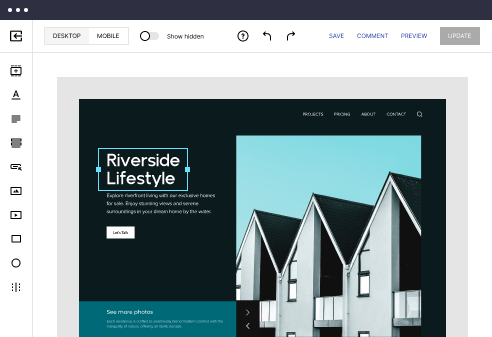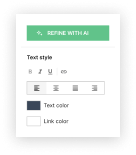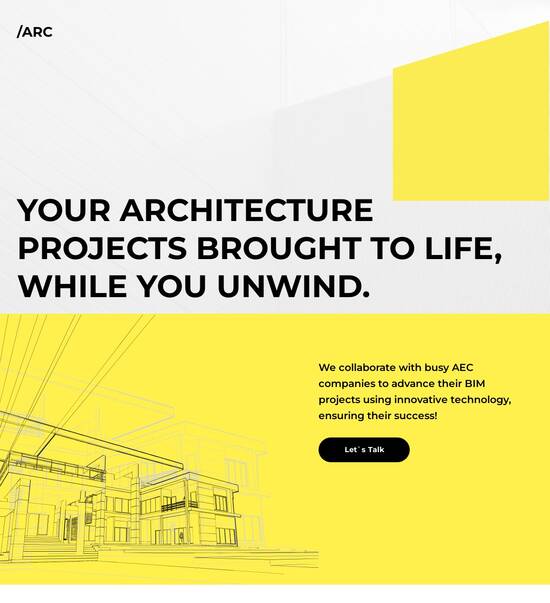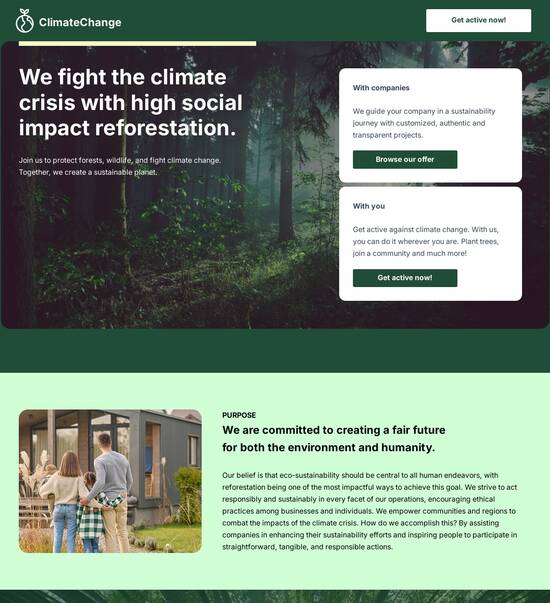
Onboarding page template for Ambulance drivers
Explore Similar TemplatesAbout template
Master your online marketing with this builder for onboarding page template for Ambulance drivers. Try more tools to create an immaculate landing page.
Recommended templates
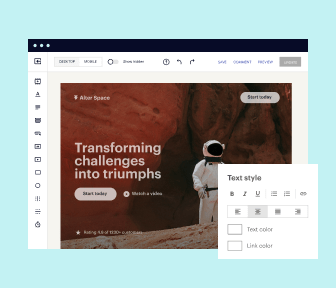
Easy to build without coding
With the intuitive drag-and-drop builder, anyone on your team can create high-converting pages without any knowledge of code or design. Make enhancements to your landing page with custom widgets using Javascript, HTML/CSS, or third-party scripts.
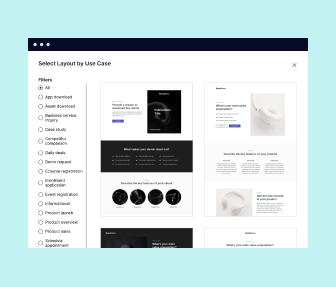
Multiple layouts for any industry and goal
Select from 500+ landing page layouts built to boost conversions across industry-specific scenarios. Customize them by adjusting fonts, adding images, and generating on-brand content with the AI assistant. Quickly scale with Instablocks® and Global Blocks that you can save, reuse, and update globally.
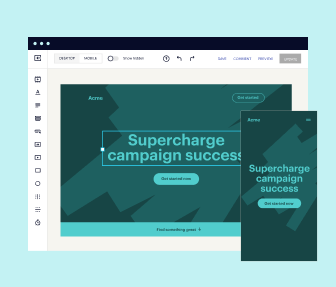
Loads fast and looks polished on any device
Every template is responsive, which means they present professionally on any device and load blazingly fast with our Thor Render Engine. You can also power them up with Google AMP technology to deliver an unparalleled mobile experience and drive higher conversions.
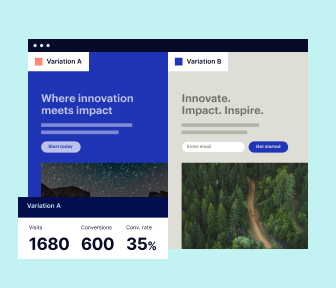
Robust analytics & experimentation
Get real-time updates and reporting across all your devices, showing the number of visitors, conversions, cost-per-visitor, and cost-per-lead. Launch AI-powered experiments, run A/B tests, and use heatmaps to analyze user behavior, then optimize your landing page to maximize conversions.
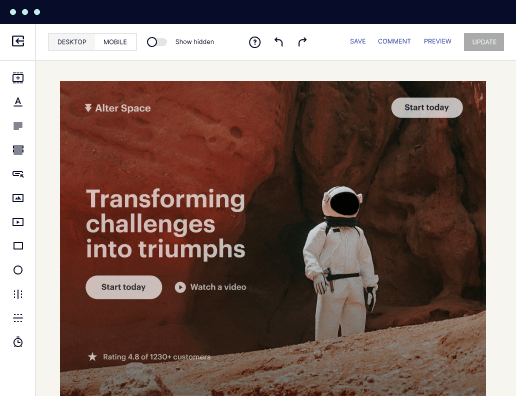
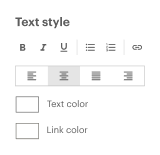
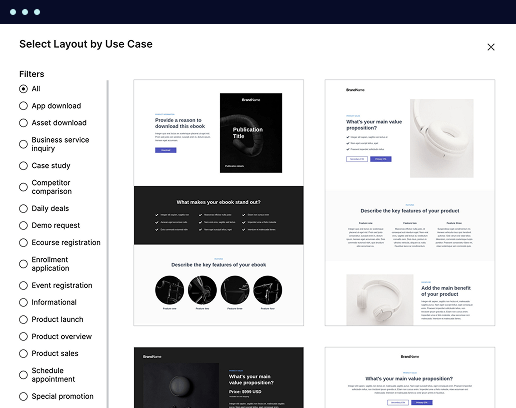
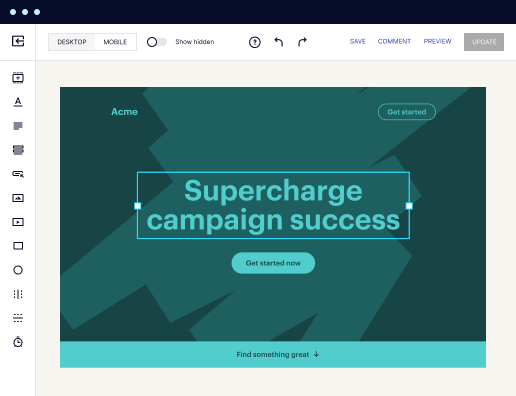

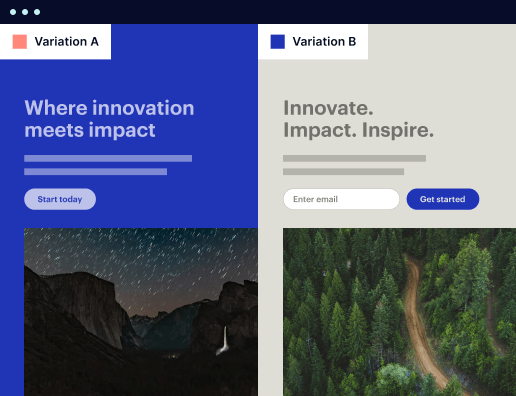
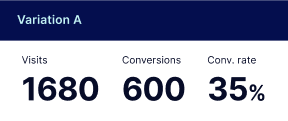
Easy to build without coding
With the intuitive drag-and-drop builder, anyone on your team can create high-converting pages without any knowledge of code or design. Make enhancements to your landing page with custom widgets using Javascript, HTML/CSS, or third-party scripts.
Multiple layouts for any industry and goal
Select from 500+ landing page layouts built to boost conversions across industry-specific scenarios. Customize them by adjusting fonts, adding images, and generating on-brand content with the AI assistant. Quickly scale with Instablocks® and Global Blocks that you can save, reuse, and update globally.
Loads fast and looks polished on any device
Every template is responsive, which means they present professionally on any device and load blazingly fast with our Thor Render Engine.
Robust analytics & experimentation
Get real-time updates and reporting across all your devices, showing the number of visitors, conversions, cost-per-visitor, and cost-per-lead. Launch AI-powered experiments, run A/B tests, and use heatmaps to analyze user behavior, then optimize your landing page to maximize conversions.
All the features you need to build lead-generating landing pages
Explore more featuresLearn how to build top-performing landing pages for any goal
FAQs
Leading the way in building high-performing landing pages





Creating an onboarding page template for ambulance drivers with Instapage
Utilizing Instapage's robust landing page capabilities can significantly enhance the onboarding process for ambulance drivers. By leveraging tailored templates, you can create streamlined, efficient pages that educate and equip new drivers with everything they need to begin their roles confidently.
Understanding the importance of onboarding in emergency services
Onboarding is a critical process in emergency services, ensuring that ambulance drivers are well-informed and prepared for the demands of their job. An effective onboarding program accelerates integration, fosters confidence, and ultimately enhances service delivery. Instapage provides powerful tools specifically designed to create engaging and informative onboarding experiences.
- Tailored content: Customize onboarding materials to reflect real-world scenarios ambulance drivers may encounter.
- Efficient training: Use video tutorials or interactive elements to enhance engagement and retention of crucial information.
- Accessibility: Ensure that all new drivers can access onboarding content easily on any device, at any time.
Step 1: Choose the right template for your needs
Selecting an appropriate onboarding page template is vital for presenting accurate information effectively. Instapage offers a variety of high-conversion templates tailored for different needs.
- Dynamic content: Use templates that allow for personalized texts to fit the unique challenges faced by ambulance drivers.
- Lead capture: Incorporate forms to collect important driver information directly during onboarding.
- Pre-built sections: Utilize ready-made sections like FAQs or driver testimonials that resonate with new employees.
Step 2: Develop engaging content
Once your template is in place, focus on creating engaging content. Ensuring that information is relevant and interactive can boost knowledge retention among new drivers.
- Real-life scenarios: Include case studies or scenarios that new drivers may face, developing critical decision-making skills.
- Visual aids: Infographics or videos can make complex information more digestible.
- Feedback mechanisms: Enable comments or feedback forms to continually improve the onboarding experience.
Step 3: Optimize for conversions
Monitoring the effectiveness of your onboarding page is essential. With Instapage’s built-in optimization features, you can assess your page's performance and make data-informed tweaks for better engagement.
- A/B testing: Try different versions of the page to see which elements resonate most with ambulance drivers.
- Analytics tools: Utilize Instapage's analytics dashboard to track how new drivers interact with the onboarding page.
- Heatmaps: Analyze where users are clicking or spending time to refine content placement.
Implementing a robust onboarding page with Instapage not only aids in acquisition but also sets the tone for a supportive and informative working environment.
Ready to transform your onboarding process? Explore Instapage today, and create the optimal onboarding page for ambulance drivers that meets all compliance and training requirements.
Onboarding page template for ambulance drivers
Understanding the unique needs of ambulance drivers in the onboarding process
Ambulance drivers play a critical role in emergency medical services, not only transporting patients but also providing an essential first contact with healthcare. Their job requires a unique blend of driving skills, medical knowledge, and the ability to perform under pressure. Therefore, an effective onboarding process is critical to ensuring that new hires are well-equipped and confident in their responsibilities. The complexity of their role means that traditional onboarding approaches can leave gaps in essential training and support.
New ambulance drivers face specific challenges typical onboarding programs don’t address. The fast-paced environment and the high stakes of their work create unique stresses. Common traditional onboarding methods, which may focus primarily on paperwork and procedures, often fall short of preparing drivers for real-life scenarios they will encounter. A tailored onboarding page template specifically for ambulance drivers becomes necessary to bridge the skills gap, ensuring they are trained comprehensively and efficiently.
This need underscores the significance of having a well-thought-out onboarding page template that speaks to the unique complexities of emergency medical services (EMS) operations. It should not only include policies and procedures but also engage drivers in a way that prepares them mentally and practically for their duties.
The structure of an effective onboarding page template
An effective onboarding page template for ambulance drivers should start with strong branding and visual consistency. Clear identification of the organization builds immediate trust and recognition among new hires. These elements go beyond logos and color schemes; they set the tone for professional engagement from day one. Including customizable header elements will ensure that all branding touches are present for consistent organization-wide representation.
Consistent use of logos and colors that represent the organization.
Easy navigation to various sections, ensuring that new hires can find information quickly.
Clear visibility of emergency contact information for immediate support.
Following the header, a warm welcome section is crucial. This section should provide a friendly introduction to the mission, vision, and values of the organization tailored explicitly for ambulance drivers’ understanding. Personal messages from leadership or team members can also establish a welcoming environment, vital for easing the transition into their new role.
A comprehensive job-specific orientation should follow. This segment must detail the job expectations, including an in-depth look at the vehicles and equipment new hires will operate. They should also be briefed on operational protocols that are unique to ambulance services, ensuring they are fully aware of the expectations surrounding their duties.
Leveraging checklists for streamlined onboarding
Incorporating checklists into the onboarding page template is essential for guaranteeing comprehensive coverage of all necessary onboarding elements. Checklists serve as practical tools that reinforce the onboarding experience, helping new hires ensure they have completed every critical component.
Required documentation such as certifications and licenses should be clearly stated.
An article or resource that reviews safety protocols and essential operational procedures.
A detailed practical training schedule which maps out what new hires can expect in their first few weeks.
These elements should form the backbone of the onboarding experience for ambulance drivers, enhancing their preparedness for the job and alleviating some of the stress associated with starting the role.
Designing onboarding programs with employee engagement in mind
Engagement is a vital aspect of the onboarding process, particularly for roles as demanding as that of an ambulance driver. Incorporating interactive elements can significantly enhance this engagement. For example, using videos featuring seasoned drivers sharing their experiences allows new hires to gain insights from real-life scenarios. These firsthand accounts provide valuable knowledge and reassurance, facilitating better emotional preparedness.
In addition to videos, quizzes or challenges related to common scenarios ambulance drivers face can serve as excellent engagement tools. They promote active learning, allowing new hires to test their knowledge and better retain essential information. This interactive approach not only makes the onboarding experience more enjoyable but also reinforces critical skill sets.
Moreover, establishing feedback loops where new employees can share their insights about their onboarding experience is imperative. These feedback mechanisms allow for continuous improvement in the onboarding program and can help adapt content based on suggestions from new hires, creating a program that evolves alongside organizational and operational changes.
Stage-based onboarding process template
Designing a stage-based onboarding process template can further enhance learning and retention of knowledge among ambulance drivers. In this model, new hires progress through various stages that structure their transition into the role, allowing for a more organized onboarding experience.
Pre-boarding stage involves preparing essential paperwork and documentation submission, along with setting initial expectations.
The first week orientation, featuring kick-off meetings and introductions to team members, provides an overview of policies and procedures specific to the ambulance sector.
Hands-on training and shadowing involve assigning mentors for practical experiences with real-time scenarios, complemented by feedback and evaluation sessions.
Ongoing development focuses on planning for continued education, including training workshops and certifications, fostering a community of ongoing support and professional growth.
This structured onboarding approach ensures that new hires are not only trained effectively but are also supported in their learning journey, promoting confidence and competence in their roles.
The role of HR processes in structuring effective onboarding
To develop a successful onboarding process for ambulance drivers, HR processes play a critical role. By optimizing onboarding templates, HR professionals can ensure compliance with regulations and help facilitate a smooth onboarding experience tailored to the needs of new hires. This optimization can include ensuring that all documentation required for EMS workers is rigorously maintained and organized.
Moreover, HR teams must be diligent in adhering to regulations surrounding training and certification for ambulance drivers. By integrating existing HR software systems into the onboarding process, organizations can streamline many time-consuming aspects, such as scheduling training sessions or tracking documentation submissions, creating a seamless flow of information.
Best practices for creating an onboarding template
Creating an effective onboarding template requires careful consideration of several best practices. Customization based on feedback from current employees ensures that onboarding materials are relevant and practical. Having active input from the very people who will utilize the materials brings valuable insights that can enhance their effectiveness.
Ensuring accessibility is also paramount. The onboarding page should cater to diverse learning styles and needs. Visual design elements, such as engaging images, infographics, and well-organized layouts, assist in making complex information more palatable and easier to understand.
Each section of the onboarding template should also be clearly delineated, allowing new hires to navigate through their training with ease. A clean, intuitive design makes retaining information easier and enhances the overall experience.
Post-onboarding support mechanisms
Once the primary onboarding period has concluded, establishing post-onboarding support mechanisms is essential for nurturing new hires as they transition into their full-time roles. Creating peer-support systems can be invaluable. New drivers can often learn a great deal from experienced team members, which promotes camaraderie and builds resilience.
Additionally, regular check-ins by HR and team leads serve to monitor progress and address any concerns that may arise during the adjustment period. These touchpoints help new hires feel supported and valued, mitigating any feelings of isolation that can occur when starting a new job. Continuous evaluation of the onboarding success rate is also critical, as organizations can iterate on their processes based on data and feedback.
Measuring onboarding effectiveness and success
To evaluate the effectiveness of the onboarding page template for ambulance drivers, key performance indicators (KPIs) should be defined from the outset. These metrics can include various factors, such as time-to-productivity, retention rates, and employee satisfaction scores. Surveys and assessments aimed at gauging new hires’ understanding and class readiness should be conducted regularly throughout the onboarding process.
Long-term success metrics are equally important. Tracking retention rates, performance evaluations, and overall satisfaction over time can highlight the effectiveness of the onboarding program, allowing HR to make adjustments as necessary. Establishing a robust system for measuring these metrics ensures operations can continuously adapt and improve their onboarding strategies.
Case studies: Transformations through tailored onboarding for ambulance drivers
Implementing a specialized onboarding template can lead to significant transformations within organizations. For instance, a case study featuring an ambulance service that adopted a tailored onboarding program demonstrated notable improvements in employee satisfaction and retention rates. By focusing on the specific needs and challenges faced by ambulance drivers, this service was able to create a supportive environment that successfully integrated new hires into their culture.
The analysis of measurable outcomes, including increased performance metrics and higher job satisfaction scores, showcased how effective onboarding strategies could enhance the overall service quality, which is paramount in emergency medical services. Identifying and adapting to the unique demands of ambulance drivers can ultimately lead to creating a workforce that is prepared, confident, and highly competent.
Conclusion: The future of onboarding for ambulance drivers
As we look to the future, the landscape of onboarding for ambulance drivers is poised to undergo significant advancements, largely due to the integration of innovative technologies. Virtual reality training, for instance, represents a promising approach to prepare new drivers for realistic scenarios they may encounter on the job. This hands-on training approach creates a safe environment for new hires to learn essential skills and procedures.
Anticipating future trends in onboarding practices will also likely include AI-assisted processes. These technologies can personalize the onboarding experience, making it even more engaging and effective. With continuous improvements and adaptations, onboarding templates for ambulance drivers will build upon their successes and continue to evolve, ensuring that the next generation of ambulance drivers is ready to meet the challenges of their vital role.
Ready to skyrocket conversions?
Supercharge your ad campaigns with high-performing landing pages
Get started